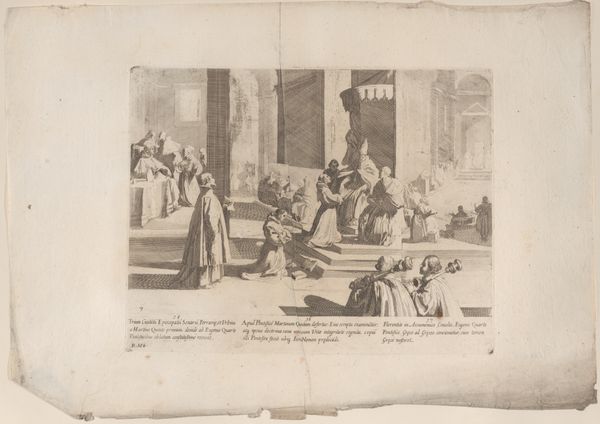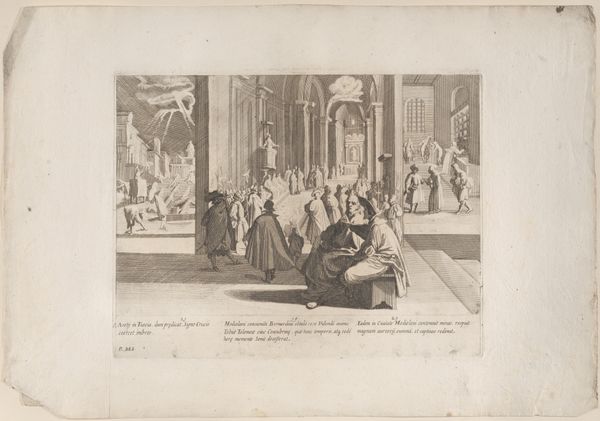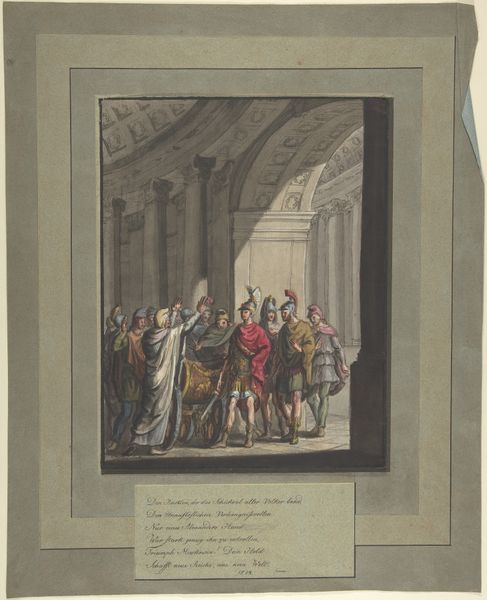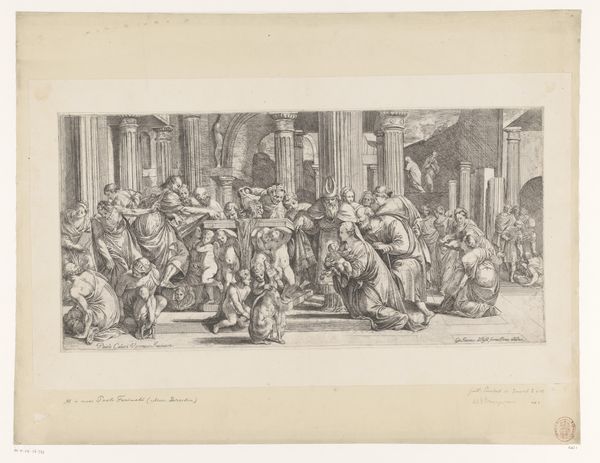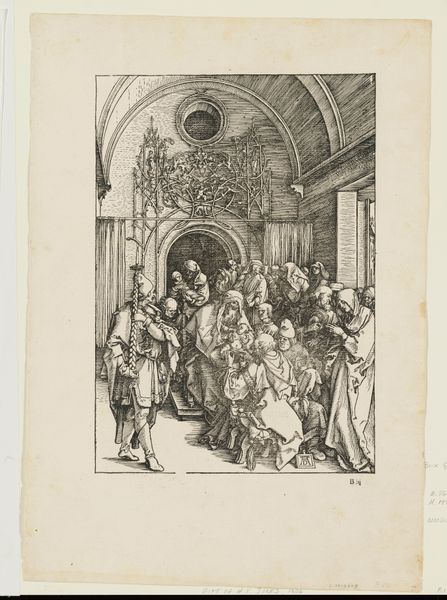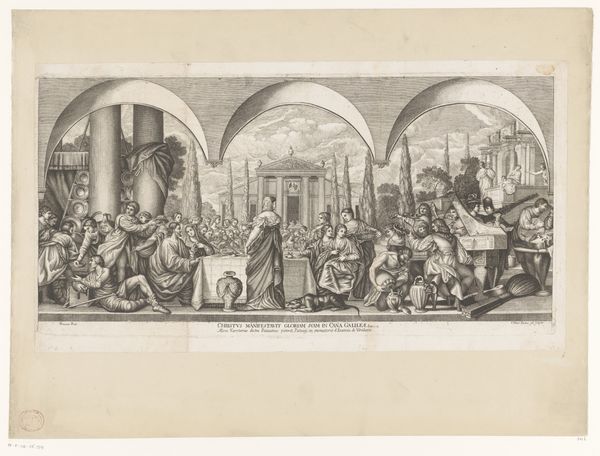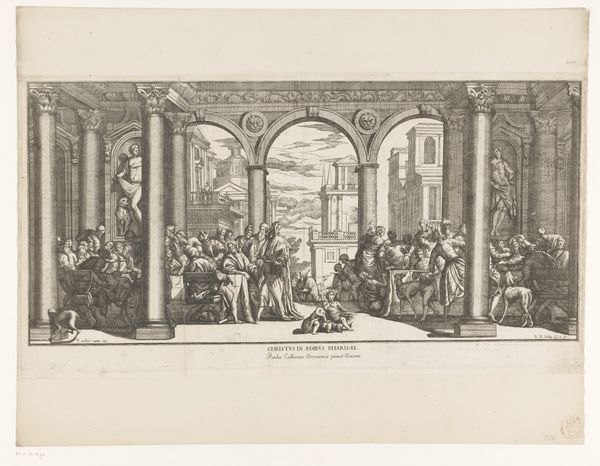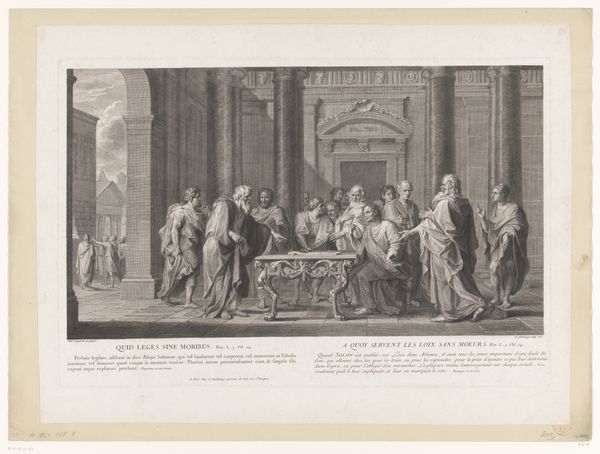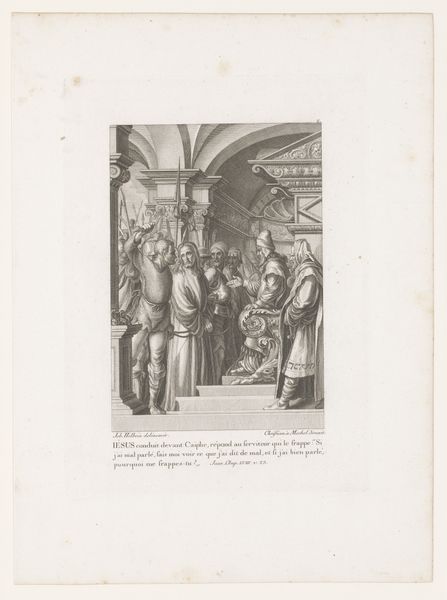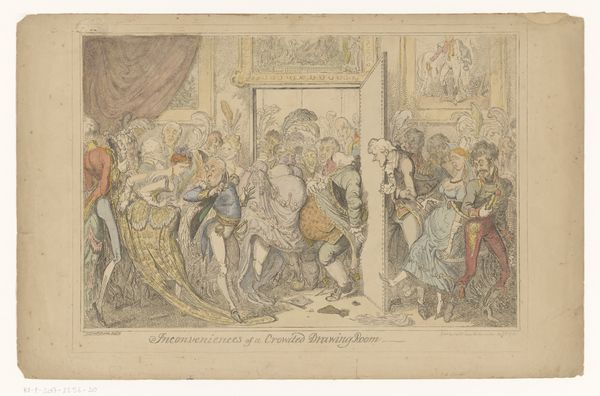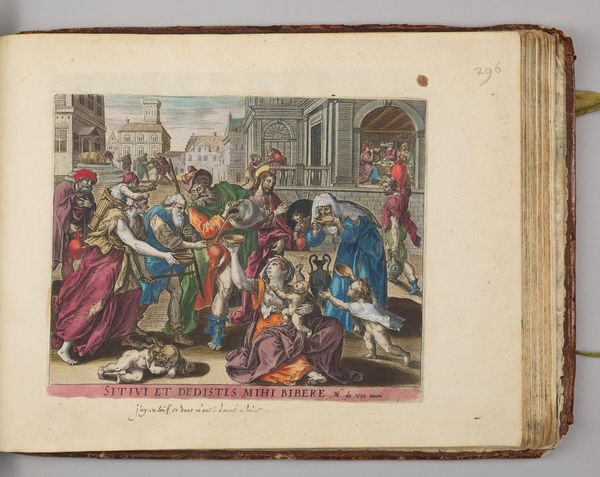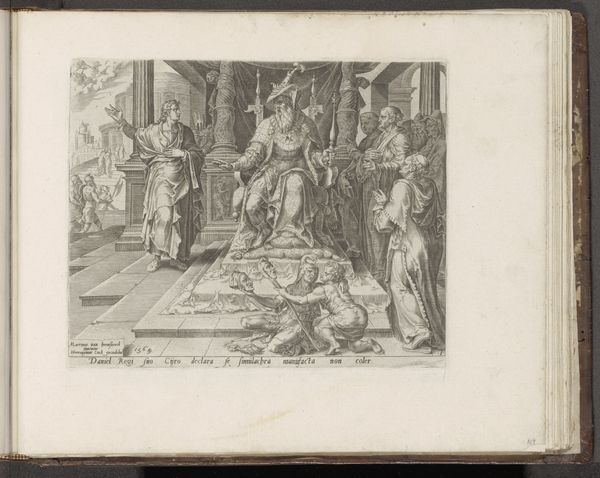
Dimensions: height 322 mm, width 443 mm
Copyright: Rijks Museum: Open Domain
Georg Balthasar Probst made this etching, "Jesus Heals Ten Lepers," sometime in the late 18th century. The image brings to life a scene from the Gospel of Luke, but it does so through the visual language of its own time. Note the architecture. While the story of Jesus is set in Roman-era Palestine, Probst imagines the scene as unfolding in front of a grand, European palace. This wasn't unusual. Artists of the period often translated biblical narratives into contemporary settings. Consider, though, what this choice implies. By placing Jesus in front of such an imposing structure, is Probst commenting on the relationship between religious authority and worldly power? Is he critiquing the church's alignment with wealthy elites? Or is he simply making the story more relatable to his audience? These are the kinds of questions art historians ask. To answer them fully, we might turn to pamphlets, sermons, and other printed matter from the period to understand the complex relationship between church, state, and society in 18th-century Europe.
Comments
No comments
Be the first to comment and join the conversation on the ultimate creative platform.
